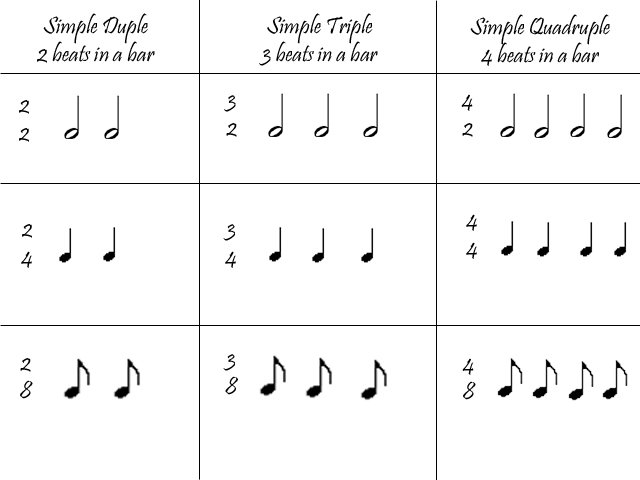This lesson took FOREVER to write because I needed to write out each example over and over again, apologies for the long wait! --------------------------------------------------------------- To start things off before we get into the grading; in order to fully understand these basics, it's important you already know the following: - Major scale - Minor scale - Major Keys (sharps and flats) - Able to read the notes on notation. (even though I cover them) If you do not already know this... please look back at my lessons: Major Scale & Modes And look at the first position - The Ionian (Major) Scale. Also: Keys And look at the first one again. If you don't know how to read notation, I recommend you visit: Music Theory --------------------------------------------------------------- So, let's start! This should cover close to all of the requirements for the official grading from companies, but each year supplies new targets and expectations, so keep that in mind. The Stave (or Staff)We're all familiar with the notes A - G, but just incase, in Music we refer to our musical notes from seven letters in the alphabet, these are repeated and they represent the same notes at a higher/lower level. The Octave (eight) is the term for the same note, higher or lower containing the same letter name. E.G. A-A, D#-D#, etc. The word "Pitch" is used to describe how high or how low a sound is, and in music this is shown with Notes:  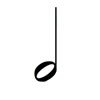   etc. These notes are placed on the Stave. The Stave consists of a series of five parallel lines. Notes can be placed on the lines or in the spaces between them. The lines and spaces are always reckoned from the lowest upwards. Lines: 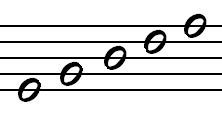 Spaces: 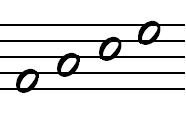 G and F ClefsAll of these notes can have no certain pitch or name until some distinguishing mark is placed at the beginning of the stave. The mark is called a Clef (which translated means "Key") and the clef then lets you know what notes are what on the Stave. Treble Clef The Treble Clef, which was originally a capital G, circles round the second line and fixes that line as G, so any note on that line represents the note G. Originally the Treble clef was known as G clef. Now because this clef is placed here, we are now able to define what the pitch is. Treble Clef: 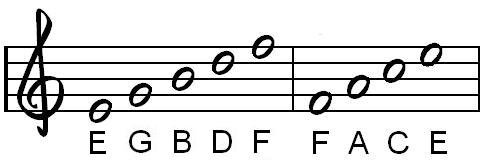 Bass Clef The Bass Clef contains two dots, these dots are always either side of the fourth line, which defines F. Originally the bass clef used to be a big F. But now the bass clef is written like this:  The notes which are on the bass clef are:  So now that we've seen these notes, there's one note that's missing from both of these clefs, that's "Middle C". It's called middle C because it's the note which is nearest to the middle of the piano. It's written on a line bolow the Treble and a line above the Bass.  So both of these clefs (with the exception of middle C, because it's outside of the Stave) will be: 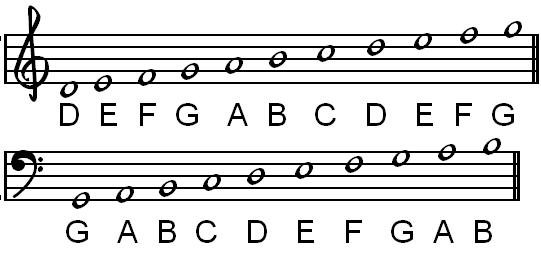 All of these notes I've just shown you can be shown on all of the white keys on a piano. 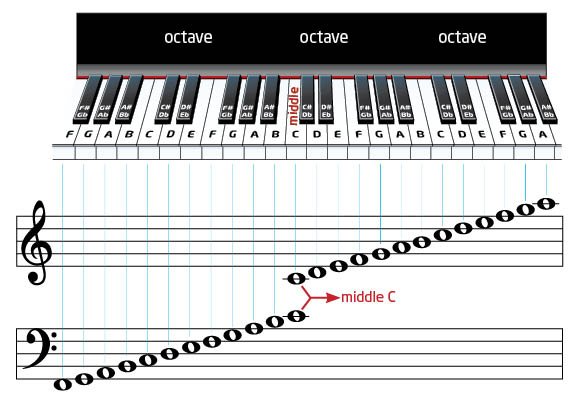 The smallest distance between two notes on the keyboard is called a semitone. There are semitones in the picture above; C-C#, C#-D, E-F, etc. A Tone consists of two semitones; C-D, E-F#, G#-A#, etc. Sharps, Flats and Naturals The Sharp (#) raises a note one semitone in pitch:  The Flat (♭) lowers a note one semitone:  And The Natural (♮) returns the note to it's original note:  Construction of the Major ScaleI'm sure most of us know what a scale is, but for those who don't: A scale is a group of notes which can be ascending or descending from the starting note. It depends on the key to determine what scale is going to be used. So let's start with C, the white notes on a piano all form a scale known as the Major Scale (this is the only scale I'll be talking about for this lesson by the way)  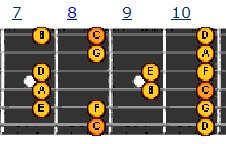 How to play this on guitar: Think of it like a position where you keep your hand still and each finger is tied to that individual fret. So the 7th fret's notes will always be played with the first finger, the 8th fret's notes will always be played with the middle finger, 9th the ring finger, and 10th with the little finger. On this site, as I hope you already know, the low E is always the bottom string and the high E is always the top string. Now on notation, these eight notes can be divided into two groups, each have four notes. This is known as a Tetrachord. Which is the Greek term; tetra meaning four, chorde meaning string or note.  So as you can see, the two semitones are in the same place, and between all other notes the interval is a tone. Now we can move onto the second of the two tetrachords, which may now be taken to form the first or lower tetrachord of a new major scale. All you need to do (in notation) is to add four notes above it. Like so:  But in order to preserve the correct order of tones and semitones, the distance between the third and fourth notes of the second tetrachord should be a semitone, not a tone. So for us to correct this notated piece, we need to put a sharp (#) before the F to raise it a semitone. Therefore, in every major scale, except C Major, there's at least one note which will need to be sharpened or flattened whenever it occurs, this is necessary for us to preserve the correct order of tones and semitones. But then, if we were to sharpen or flatten notes each time they occur, it would just get complicated and very confusing, so the sharps or flats are grouped together and written immediately after the clef at the beginning of each line. This is what indicated the key; which is the set notes of which the piece is built, with each note having a definite relation to a note known as the key-note. The group of sharps or flats is called the Key-signature So any sharps or flats occurring in the course of a piece other than in the key-signature are called accidentals. So when it comes to the G Major scale, it can then be written like this:  !!!NOTE!!! If you're thinking about taking an exam in music theory you should know that you're sometimes asked to write a scale without key-signatures. So if that happens, write out the notes of the scale needed (e.g. D Major) and place the accidentals before those notes which need them. Like so:  If you were to write D Major with a key-signature, you would then write it like this:  F Major without key-signature:  F Major with key-signature:  Tonic Triads (In C G D F)The Tonic is the key note, the root note. The tonic triad in a major key is a chord of three notes, consisting of the tonic, third and fifth of the scale (doh-me-soh). Tonic Triad of C Major:  As you can see from this image, if the tonic is on a line, then the other two notes will be on the next two notes above; similarly, if the tonic is on a space, then the two remaining notes will be on the two spaces directly above the key-note. Like so:  Time Values of Notes |



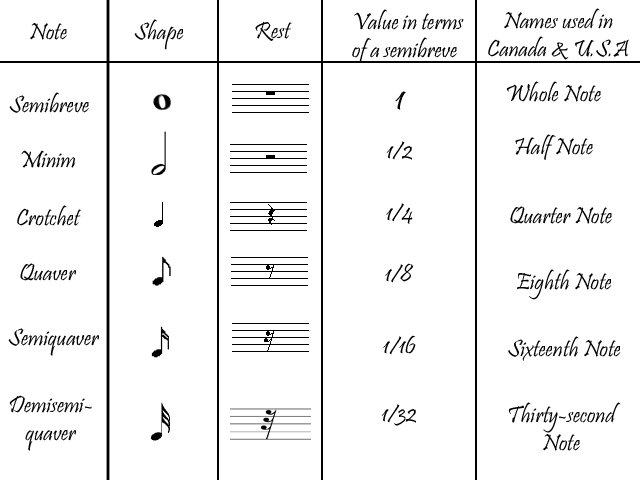












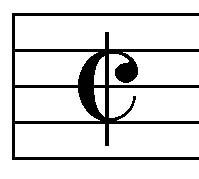
 is equal to the value of 3 quavers.
is equal to the value of 3 quavers. is equal to the value of 3 semiquavers.
is equal to the value of 3 semiquavers. = a crotchet plus a quaver. The first note only is sounded, but it's held on for its own length plus that of the following tied note.
= a crotchet plus a quaver. The first note only is sounded, but it's held on for its own length plus that of the following tied note. The effect of the first dot is to increase the value of the note by half, and the second dot adds again half the value of the first dot.
The effect of the first dot is to increase the value of the note by half, and the second dot adds again half the value of the first dot. 

